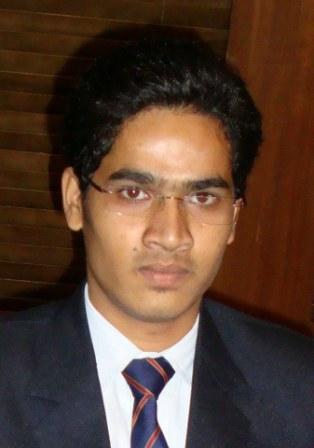Dr. SPVA Sairam
Many books and articles have been written on the emancipatory deeds of Dr. Ambedkar that touched the lives of millions, but very little information is available, at least in English, about the private life of Babasaheb. In this article, I will explore an exciting aspect of his private life, namely the films that he watched during his lifetime and the interactions that he had with a few prominent people connected to theatre and music, like V. Shantaram, Master Krishnarao Phulambrikar, P. K. Atre, Dilip Kumar, and the Samarth family.
I] Setting the Backdrop
What films did Dr. Ambedkar watch? Perhaps it is impossible to give an accurate answer, but in this article, I will make an attempt to trace the films that he watched by examining his writings and letters. To begin with, the recorded evidence of one of the earliest movies that Dr. Ambedkar watched can be traced to Uncle Tom’s Cabin [1927]. It is said that he went to this film along with his wife, Ramai [1]. But this is not to suggest that he had not seen any movies before 1927. We know for certain that by the time he reached his 20s, the theatre industry in India had begun to emerge vibrantly in the city of Bombay.
Speaking about the same, author Meera Kosambi noted: “Maharashtra responded to international developments in film technology and Indianised this new medium of Western origin through style and content. The Lumiere brothers screened their first set of 12 short films at Mumbai’s Watson Hotel on 7 July 1896 for an audience of 200, at two-rupee tickets. A week later the films were screened twice a day at Novelty (later named Excelsior) Theatre with tickets ranging from two annas to two rupees…Other foreign films followed and an enterprising Parsi, M. Sethna, constructed Mumbai’s first theatre for films in 1904. Most popular among the foreign films was The Life of Christ in two parts …In 1913 came … path-breaking mythological Raja Harishchandra.” [2]
Dadasaheb Phalke’s Raja Harishchandra, which was considered the first full-length Indian feature film, was released on May 3rd, 1913, and we know that Dr. Ambedkar embarked on his journey to Columbia University after June 1913. Is it possible to assume that in this gap of a month, he might have watched this movie that had been hyped a lot at that time? Unfortunately, we are left to make only a guess.
In the third week of July 1913, Dr. Ambedkar arrived in New York City. It is very interesting to understand the state of theatre in the U.S.A. at that time. By the 1910s, feature-length films [films of four or more reels that usually ran for at least an hour] were extremely rare in the U.S.A., but everything began to change after 1910—an era that is often referred to as the Classical Hollywood Cinema—and New York City became a popular destination for most of the promising film studios.
In the words of Prof. Steve Neale: “…the corporate headquarters of the studios were not in Hollywood or Southern California, but in New York. It was here that finance was raised from banks and investors, that decisions about the cost, scale and nature of each season’s programme of films were taken, that publicity campaigns were mounted, that national and international distribution plans were made, and that the booking and circulation of film prints were organised. It was here, too, especially in the late 1910s, the 1920s and the early 1930s, long after its dominance as a centre of production in earlier years, that some of the films produced by some of the companies and their affiliates continued to be made. And it was here that the major companies organised the acquisition, administration and programming of their cinema chains.” [3]
The period 1913–1916 in which Babasaheb studied at Columbia University saw the release of popular films like Traffic in Souls or While New York Sleeps [1913], Dough and Dynamite starring Charlie Chaplin [1914], The Call of the North [1914], the controversial The Birth of a Nation [1915], The Girl of the Golden West [1915], and so on.
Again, in the absence of concrete evidence, we are left to conjecture if he had watched any of these films. Still, no one can deny the fact that the era in which Dr. Ambedkar lived in New York marked the transformation of Hollywood in the U.S.A. and that it is probable that he would have observed the transformation that was going on.
II] Dr. Ambedkar, V. Shantaram & Master Krishnarao Phulambrikar
After finishing his studies, Babasaheb returned to India and started practicing as a Barrister in 1923. The era of the 1920s witnessed the growth of popular filmmakers like V. Shantaram. Commenting on the social origins of Shantaram, Prof Meera Kosambi writes: “Born to a Jain father and a Hindu Maratha mother in a small town near Kolhapur…Shantaram is ambiguous about his mother’s origins. Leela Chitnis mentions in passing that Shantaram’s maternal aunt, Mrs Pendharkar, was born into a devdasi family.” [4]
Shantaram’s first major role came in Savakari Pash (The Moneylender’s Shackles, 1925), a social film directed by Baburao Painter based on a story by N. H. Apte. Shantaram didn’t stop there; he went to direct path-breaking movies to earn a powerful place for himself in the film industry.
It is noted that V. Shantaram shared a cordial relationship with Babasaheb. In the words of my friend Vinay: “V. Shantaram was an avid supporter of Buddhist celebrations in Mumbai, including 6th December for Chaityabhumi. The Plaza cinema in Dadar built by him is modelled on Buddhism.”
In this connection, it is interesting to note that Shantaram directed a movie called Amrit Manthan that deals with the conflict between Buddhism and Hinduism. Speaking about the same, Prof. Meera Kosambi noted: “Prabhat’s first film at Pune was Amrit Manthan (Marathi and Hindi, 1934) directed by V. Shantaram…supported by the singer Sureshbabu Mane and the female lead by the well-educated Nalini Tarkhad who made her debut, supported by the 16-year-old Shanta Apte. Set in the remote past, the imaginary, didactic and complicated storyline revolves around a pacifist, Buddhist king who is murdered by the orthodox Hindu royal priest who in turn faces a general public outcry and kills himself.” [5]
Amrit Manthan became the first film to celebrate Silver Jubilee, a term coined by Baburao Pai [Prabhat Film Company’s distributor] after the film ran in Bombay for more than 25 weeks!
We do not know if Dr. Ambedkar had watched Amrit Manthan, but a careful examination of his writings and letters shows us that he watched at least two films of V. Shantaram namely Dharmatma (1935) and Kunku (1937).
Speaking about the film Dharmatma, Babasaheb noted: “Even the saint Eknath who now figures in the film “Dharmatma” as a hero for having shown courage to touch the untouchables and dine with them, did so not because he was opposed to Caste and Untouchability but because he felt that the pollution caused thereby could be washed away by a bath in the sacred waters of the river Ganges.” [6]
Shockingly, some of the members of the censor board forced the director to cut a scene from the film which depicts an Untouchable girl entering a Brahmin’s house. [7]

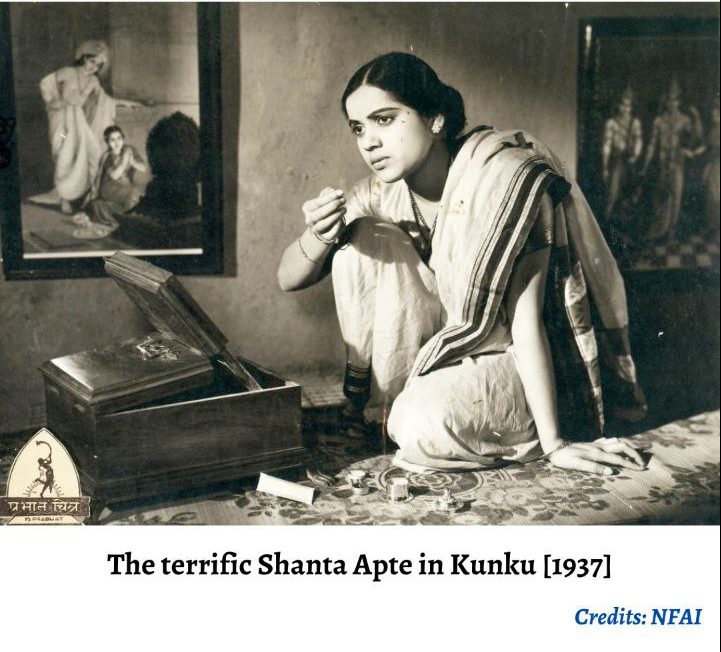
The information regarding Kunku [released in Hindi as Duniya Na Mane] is available from the letter that Dr. Ambedkar had written to Dr. Savita Ambedkar. He writes: “If words have any meaning and marriage has any foundation, what am I to understand when you said in your letter in which you said, “I accept you”. You accept me as what? As a Great man, as a learned man, or as a Good looking man? What is your spring of action? As a poet has said. “Love built on beauty dies as soon as Beauty dies”. The same is true of love built on Greatness or Learning. These things after some time begin to fail. They cannot be the foundation of marriage. Marriage can be founded only on love which can be described in no other terms except the longing to belong. Are you actuated by this feeling? Nothing else will either do or suffice. I don’t know if you have seen the film KUNKU or read the novel called “WOMAN THOU GAVEST ME” by Thomas Hardy. The marriage in both cases was a matter of form. How very unhappy and tragic they were. The reason why they were so tragic was because there was no longing to belong.” [8]
Another interesting link between Babasaheb and Shantaram was the great Sangeet Kalanidhi Master Krishnarao Phulambrikar. Master Krishna was a very popular classical singer who is credited with having created numerous complex (aprachalit or anwat ragas), composite ragas (jod ragas), and many bandishes [fixed, melodic compositions in Hindustani vocal music]. Master Krishna made his debut in the film industry with Shantaram’s Dharmatma. (Popular Marathi stage performer Bal Gandharva also made his debut with this movie. Interestingly, it was Shahu Maharaj who encouraged the talent of young Bal Gandharva and helped him with the treatment of his ear infection under the renowned physician Dr. Charles Edward Vail of Wanless Mission Hospital [9].)
Master Krishna was deeply influenced by the movement of Babasaheb and performed opening songs for him on many occasions [10]. Impressed by his amazing voice, Babasaheb had requested Master Krishna to compose music for Buddha Vandana. In this process, he learned Pali at Dr. Ambedkar’s Siddharth College. The story goes like this:
“Influenced by the endless efforts by the Master to make ‘Vande Mataram’ the national anthem of the country, in front of the members of the Constituent Assembly, Dr. Babasaheb Ambedkar requested him to set Buddha Vandana to music. Master accepted the request and composed the Buddha Vandana without taking any remuneration, in the spirit of serving the Lord Buddha…As the lead singer, he sang the entire Buddha Vandana and effectively used the chorus wherever required. For this, he had also taken the efforts to learn the Pali language to understand the meaning of these sacred chants. For this work, he went to Siddhartha College in Mumbai… Dr. Babasaheb hailed this work, felicitated Master Krishnarao, and brought out a 78rpm record of Buddha Vandana in 1956. This record was played during the mass conversion ceremony held at Nagpur on the 14th of October 1956.” [11]
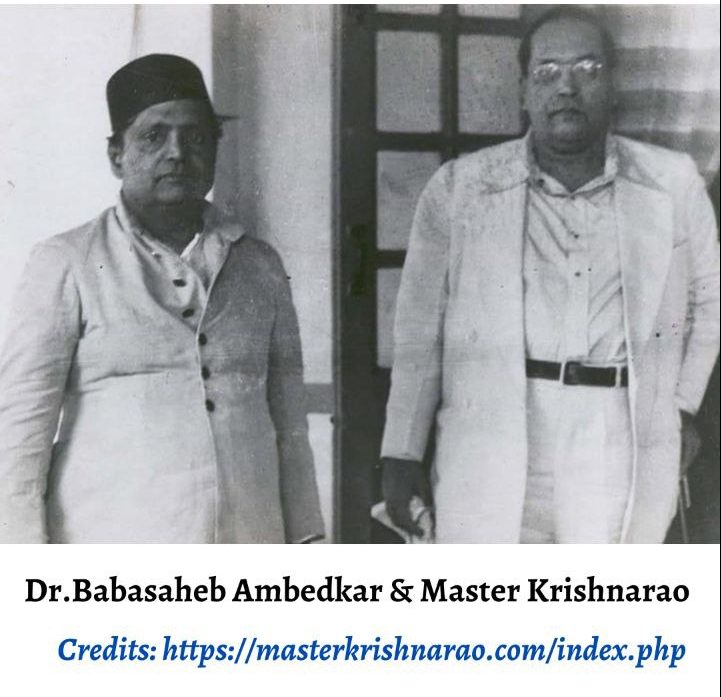
Besides watching Uncle Tom’s Cabin [1927], Dharmatma [1935], and Kunku [1937], Dr. Ambedkar had also watched Bombay Talkies’ Achhut Kanya [1936] starring Devika Rani and Ashok Kumar. In the words of Keer: “Achhut Kanya, a film based on the life of Untouchables, he [Dr. Ambedkar] witnessed with peculiar emotion in his eyes.” [12]
III] Dr. Ambedkar, P. K. Atre, Dilip Kumar, and Samarth family
In 1948, Dr. Ambedkar married Dr. Savita Ambedkar and evidence points that they watched at least two movies together—Oliver Twist (1948) and Mahatma Phule (1954). Unlike Oliver Twist, we have some interesting information to understand Dr. Ambedkar’s reaction to the movie on his guru Mahatma Phule. Narrating the same, Dr. Savita Ambedkar writes:
“The great doyen of literature Acharya Atre had decided to make a film on Mahatma Jyotiba Phule and had invited Saheb for the launch of the shooting. Saheb was not keeping very well, but since it was a movie on Mahatma Phule and because he enjoyed a very close relationship with Atre, he could not turn the invitation down. The launching of the shooting was done at the hands of Saheb at Famous Studios, Mumbai, on 31 January 1954.”
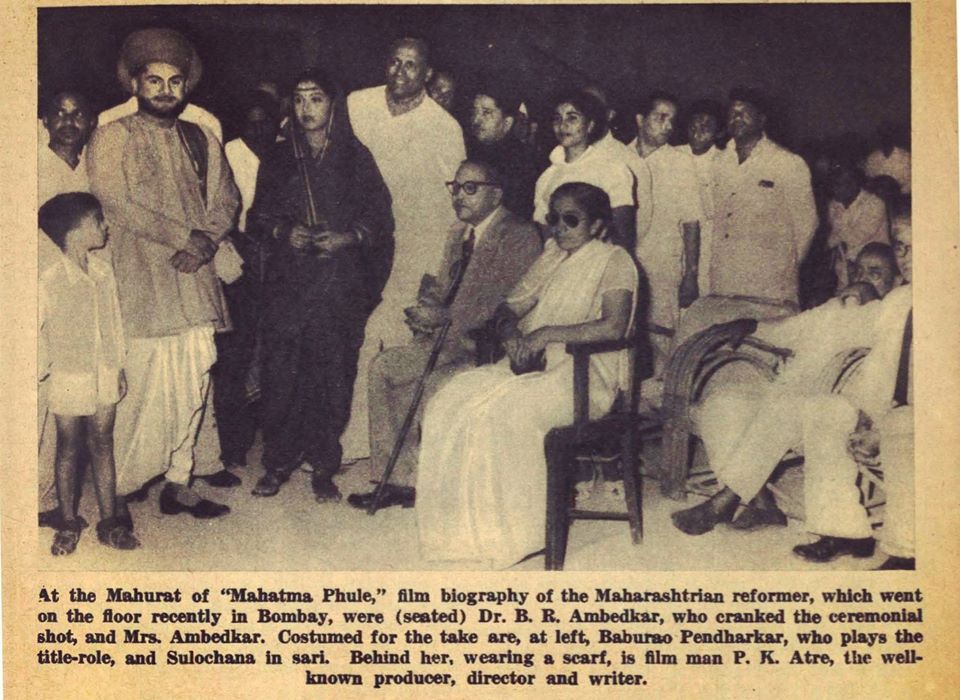
After the film was ready, Dr. Ambedkar and Dr. Savita Ambedkar were invited for the premiere. Recollecting about that event, Dr. Savita Ambedkar noted: “Once the film was ready, Atre also invited us for its premiere. Saheb was completely overwhelmed when he saw the movie. As he saw it, he remembered Mahatma Phule’s work and sacrifice and wept. After the movie was over, he patted Pendharkar on the back for his excellent performance and congratulated Atre too. Not satisfied with this, he wrote a letter to Atre on 20 November 1955, lavishing praises on him and wishing the movie success.” [13]
Dr. Savita Ambedkar also shares an interesting interaction between Patthe Bapurao and Babasaheb. She wrote: “There is the other example of Saheb literally driving away the famous theatre man Patthe Bapurao by telling him, “I don’t want so much as a shell from a person who makes his money by getting untouchable women to dance on the stage.” A number of capitalists had expressed their readiness to help on condition that the institutions be named after them, but Saheb never accepted money that was earned by illegal means.” [14]
The late 1940s saw the rise of many fresh talents in the film industry, the most spectacular among them were Mohammed Yusuf Khan, popularly known as Dilip Kumar, and Lata Mangeshkar. Noting the fact that she met Babasaheb, Lata Mangeshkar tweeted: “On the anniversary of Bharat Ratna Dr Babasaheb Ambedkar ji, father of the Indian Constitution, I offer him a million prayers. I met him in person and that is my good fortune.” [15] It is not out of place to remember the fact that the late Lata Mangeshkar had consistently refused to sing songs for Babasaheb!
It is also recorded that Dilip Kumar met Babasaheb Ambedkar on a few occasions. There are two accounts that offer some information regarding their meetings. While the former account informs us that both had heated arguments over the morality of film stars [16], the latter account narrates how Dilip Kumar got inspired by the words of Dr. Ambedkar [17].
After a serious examination of both accounts and the events that followed later, one can assert positively that despite the difference of opinion on a few issues, Dilip Kumar had a huge reverence for Dr. Ambedkar, which becomes clear after reading the speech that Dilip Kumar gave at the music launch of the movie ‘Dr. Babasaheb Ambedkar’, directed by Jabbar Patel.
Speaking about the greatness of Babasaheb, Dilip Sahab said: “The completion of the film on Dr. Ambedkar or I should rather say, to have the courage to venture and try and make a film on a man who has given this country its constitution, which defines the rights of every given individual on this land, rights in equity and thereby rights in decency and made this country as one of the fraternity of the civilized people on this earth…It’s strange how historians, even the media, the people, and politicians have bypassed this great man who through his sacrifice and scholarship, who with his will and great determination went on…I had the unique experience and pleasure to have met Dr. Ambedkar during his closing years in life. I don’t think I need to dilate upon my own experience with him but definitely his life is a shining example for all those people who are civilized….we were the first country to have a constitution that defined the rights of every single individual, not a sect of people or not a community but every given individual… We were all young when the country was free, we had a great deal of reverence for Dr. Ambedkar.” [18]
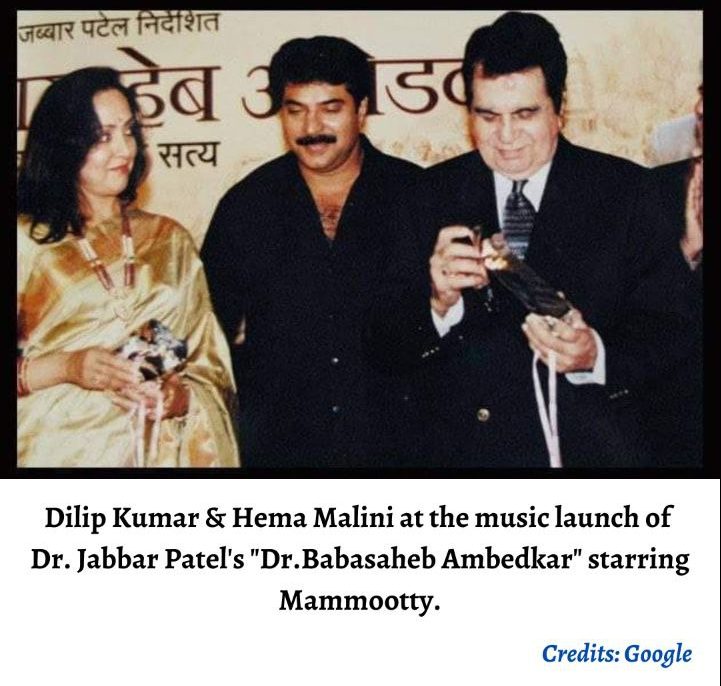
Another less-known connection that Babasaheb had with the film industry is with Kumarsen Samarth. Kumarsen’s brother, M. B. Samarth, was a close friend to Dr. Ambedkar. Kumarsen married the then-famous Marathi actress Shobhana Samarth [the daughter of actress Rattan Bai]. Popular actresses Nutan and Tanuja were their daughters [Kajol is the daughter of Tanuja]. Shobhana is also related to another top-notch performer called Nalini Jayawant, who acted in classics like Shikasth [1953], Nastik [1954], and Kaala Paani [1958].
As a matter of fact, when Babasaheb Ambedkar planned to initiate another massive conversion ceremony to Buddhism in Bombay on December 16th, he planned to stay at the home of Kumarsen and Shobhana Samarth. But, unfortunately, Babasaheb passed away on December 6th, 1956 [19].
To conclude, there is a huge necessity to document the vast interactions that people from different walks of life had with Dr. Ambedkar. Undoubtedly, collecting such information and putting it in context not only enriches us but also adds immense biographical value to understanding many unknown facets of the life of Dr. Ambedkar.
References
1] Dr. Ambedkar: Life and Mission by Keer, page 471 [Though there have been many adaptations of Uncle Tom’s Cabin, I am making a concrete guess that Babasaheb and Ramai would have watched the movie that was released in 1927]
2] Gender, Culture, and Performance Marathi Theatre and Cinema before Independence by Meera Kosambi, page 318 [from now as GCP by Meera Kosambi]
3] The Classical Hollywood Reader, edited by Steve Neale.
4] GCP by Meera Kosambi, page 326
5] ibid, 334
6] Annihilation of Caste, Vol-1 of BAWS, page 87
7] GCP by Meera Kosambi, page 334.
8] Reminiscences and Remembrance of Dr. B. R. Ambedkar by Nanak Chand Rattu, page 67
9] I thank my friend Milind Patil for sharing this valuable resource – Bal Gandharva The Nonpareil Thespian by Mohan Nadkarni, from page 10.
10] See Vol-17 [3], page 501 [Sangeet Kalanidhi Master Krishnarao Fulambrikar sang a welcome song in honor of Dr. and Mrs. Ambedkar. The welcome song was composed by one of our brother pleaders Shri S. G. Bhat]
11] Explore https://masterkrishnarao.com/eng/buddhavandana
12] Dr. Ambedkar: Life and Mission by Keer, page 471
13] BABASAHEB My Life with Dr. Ambedkar by Dr. Savita Ambedkar, page 170
14] ibid, 193
16] BABASAHEB My Life with Dr. Ambedkar by Dr. Savita Ambedkar, page 193
17] https://www.roundtableindia.co.in/dilip-kumar-a-baghbaan-of-pasmanda-movement/
18] Watch https://www.dailymotion.com/video/x8mc757
19] I thank Siddharth college of Arts Science and Commerce Alumni Association’s Facebook page for sharing this valuable information
~~~
Dr.Spva Sairam is a Dentist by profession.


